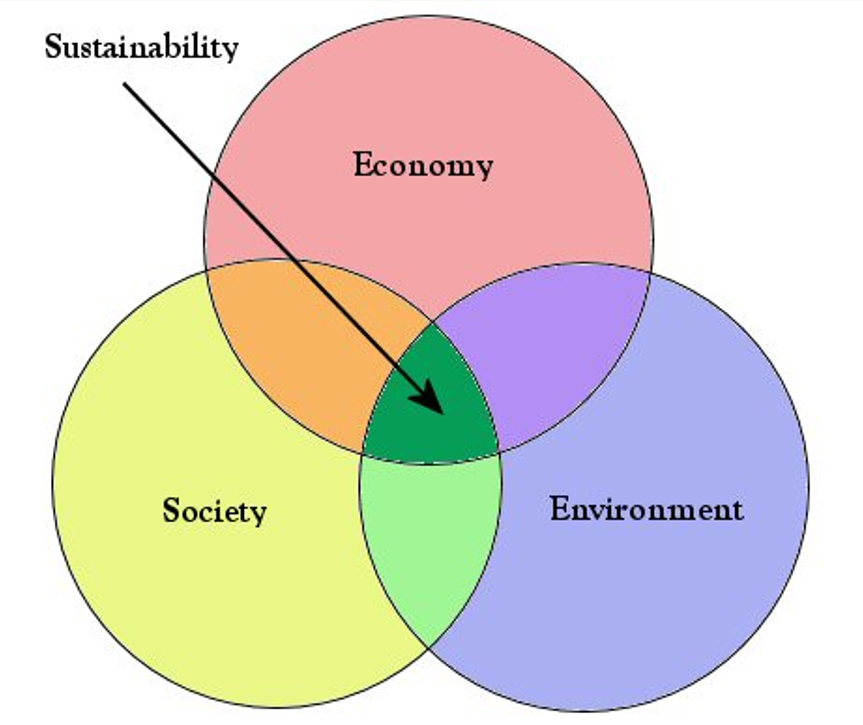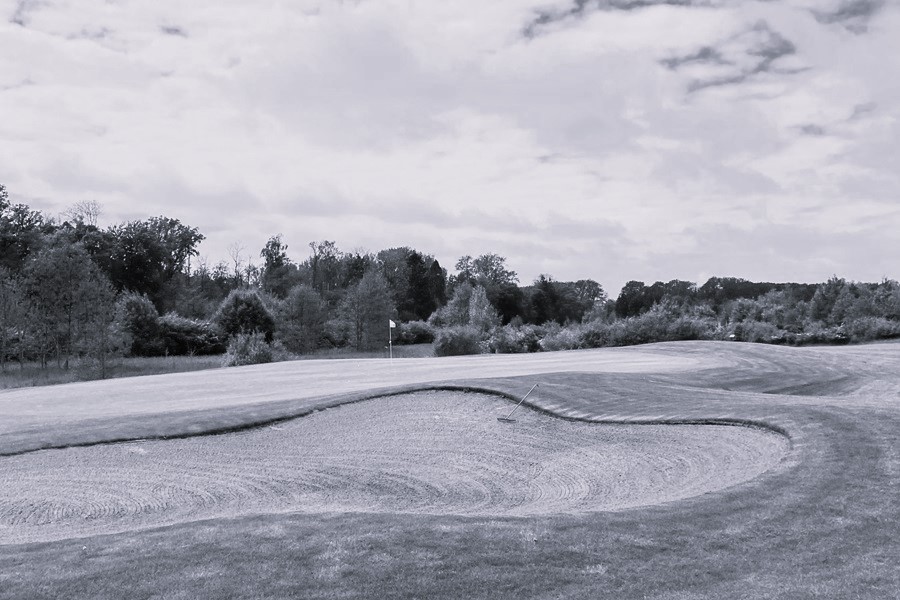The term sustainability is now widely used. At a recent trade exhibition I attended, virtually every stand was seeking to demonstrate how its products or practices were sustainable but what exactly does the term mean, as it seems to be applied in many different ways. I always believe in starting with a dictionary definition and my version says “Sustainability is a societal goal that broadly aims for humans to safely co-exist on planet earth.” Well this gets us started but it is clear that we need to get a more complete understanding, certainly if we are to apply it correctly in our own lives and organisations.
Let us take for example a typical UK Golf Club. The first aim of that Club is to be an economically viable business with financial margins sufficient for re-investment and future development. Without this it is not sustainable, and so economic viability is an essential element in sustainability. A further aim of the Club is to, wherever possible, protect the environment and seek to ensure that operations undertaken have as little as possible impact upon its surroundings. This it can do through such things as re-cycling practices, looking to reduce carbon emissions from machinery used and other activities and, in managing the surrounds to the golf course, looking how it might encourage biodiversity and insect life. So in addition to economics, a second element in sustainability is the environment and its conservation.
We now have two essential elements of sustainability but a third remains and that is impact upon society. The Golf Club needs to deliver a first class product to its visitors and members but also seek to minimise its impact upon those who live close by and ensure its staff are safe, as well of course those who use its facilities. Therefore we can best consider sustainability as having three main parts. These are often referred to as the three pillars – economic viability, environmental protection and social equity. I recognise that I am in danger of getting too complicated and academic but I do think that before we can consider sustainability properly and decide how we can contribute to a sustainable agenda, we need to properly understand what it means. The dangers of not doing so are that we look to do something which may seem to be sustainable in one element but be thoroughly detrimental to the others.
As example let us consider practices employed for weed, pest and disease management. Some argue for a world free of pesticides as they say, that this would be more sustainable but is that totally true? Maybe some alternative methods of control considered have greater carbon emissions for example or their greater cost might impact upon financial viability. This is not an argument for pesticides per se, indeed minimising their use is clearly beneficial, it is just that in seeking to be fully sustainable we must judge the various methods of control available against all three pillars of sustainability and make fully considered choices. As with all decisions personal or business, they benefit from proper consideration and appraisal before implementation.
It is also important to focus upon the practical steps that can be taken by any organisation to implement sustainable practice in their actions and activities. At the trade exhibition mentioned earlier, there was a clear focus on sustainability in the specialist equipment displays with machines seeking to minimise carbon emissions and provide more effective and efficient solutions. Steps being taken can be large or small – one small manufacture I spoke to quantified savings made by just changing light bulbs and great re-cycling of materials.
Of course in any discussion on sustainability we must look at the politics and government policy. As said earlier, I personally do get concerned about some of the pronouncements made by politicians in terms of sustainability and understanding of its full meaning but nevertheless we need to understand policy direction on the topic. The UK government in July 2021 produced a revised document headed “Implementing the Sustainable Development Goals” These goals are wide ranging and challenging to say the least. They certainly widen the consideration and definition of sustainability greatly. Here are the key goals set out in the document.
- Achieve food security and improved nutrition and promote sustainable agriculture
- Ensure healthy lives and promote well being
- Ensure quality education and promote lifelong learning opportunities for all
- Achieve gender equality
- Ensure availability and sustainable management of water
- Promote sustained, inclusive and sustainable economic growth and full and productive employment
- Build resilient infrastructure and promote innovation
Another key driver especially important in property development, as well as sustainability targets, is the recent introduction of biodiversity net gain (BNG) legislation. This is set to see the biggest change to planning regulations in decades. This new law as part of the government’s Environment Act will make sure wildlife habitats are left in a better state than before development, and in doing so make a significant contribution to nature’s recovery – the environment pillar of sustainability. The Biodiversity Gain Site Register provides a publicly accessible source of information about off-site gains. The register is one part of a Service which went live when BNG became mandatory. The Service includes a collection of new digital and other services local planning authorities, developers, landowners, and others will need to be BNG compliant.
So whilst we might find it relatively easy to say we seek to be sustainable, it is clear that actually doing it and deciding what to do is far from easy. On a global scale the need to address sustainable issues, strive for zero carbon and to protect our planet and its biodiversity are easy to sign up to but can very difficult to attain. Whatever we do as a nation, an individual or organisation requires sensitive balancing of considerations. And focus on those three pillars of sustainability – economic, environmental and social.
One thing for certain is that the agenda of sustainability is not going away and we can all play our part in its delivery. To quote Sir David Attenborough “It is surely our responsibility to do everything within our power to create a planet that provides a secure home, not just for us but for all life on earth.”









